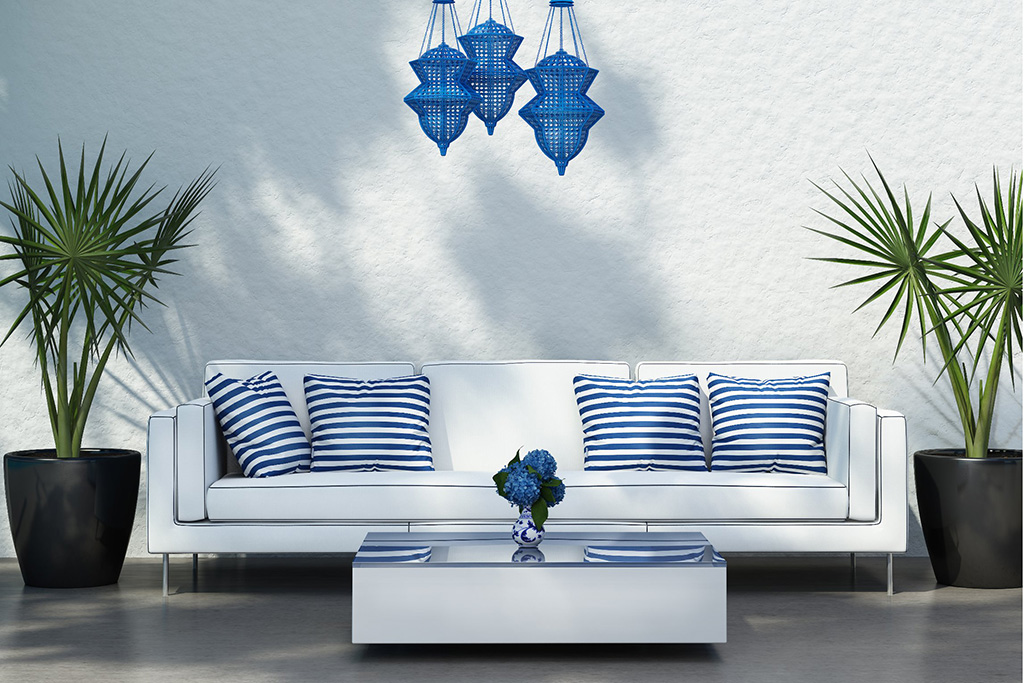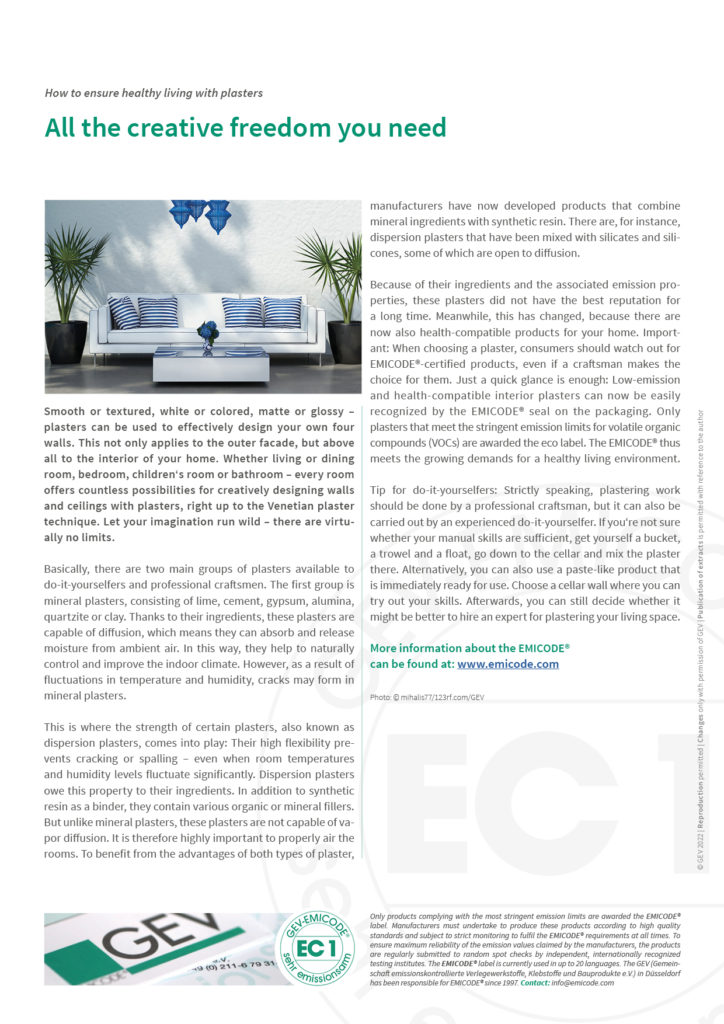All the creative freedom you need
How to ensure healthy living with plasters
Smooth or textured, white or colored, matte or glossy – plasters can be used to effectively design your own four walls. This not only applies to the outer facade, but above all to the interior of your home. Whether living or dining room, bedroom, children’s room or bathroom – every room offers countless possibilities for creatively designing walls and ceilings with plasters, right up to the Venetian plaster technique. Let your imagination run wild – there are virtually no limits.
Basically, there are two main groups of plasters available to do-it-yourselfers and professional craftsmen. The first group is mineral plasters, consisting of lime, cement, gypsum, alumina, quartzite or clay. Thanks to their ingredients, these plasters are capable of diffusion, which means they can absorb and release moisture from ambient air. In this way, they help to naturally control and improve the indoor climate. However, as a result of fluctuations in temperature and humidity, cracks may form in mineral plasters.
This is where the strength of certain plasters, known as dispersion plasters, comes into play: Their high flexibility prevents cracking or spalling – even when room temperatures and humidity levels fluctuate significantly. Dispersion plasters owe this property to their ingredients. In addition to synthetic resin as a binder, they contain various organic or mineral fillers. But unlike mineral plasters, these plasters are not capable of vapor diffusion. It is therefore highly important to properly air the rooms. To benefit from the advantages of both types of plaster, manufacturers have now developed products that combine mineral ingredients with synthetic resin. There are, for instance, disperson plasters that have been mixed with silicates and silicones, some of which are open to diffusion.
Because of their ingredients and the associated emission properties, these plasters did not have the best reputation for a long time. Meanwhile, this has changed, because there are now also health-compatible products for your home. Important: When choosing a plaster, consumers should watch out for EMICODE®-certified products, even if a craftsman makes the choice for them. Just a quick glance is enough: Low-emission and health-compatible interior plasters can now be easily recognized by the EMICODE® seal on the packaging. Only plasters that meet the stringent emission limits for volatile organic compounds (VOCs) are awarded the eco label. The EMICODE® thus meets the growing demands for a healthy living environment.
Tip for do-it-yourselfers: Strictly speaking, plastering work should be done by a professional craftsman, but it can also be carried out by an experienced do-it-yourselfer. If you’re not sure whether your manual skills are sufficient, get yourself a bucket, a trowel and a float, go down to the cellar and mix the plaster there. Alternatively, you can also use a paste-like product that is immediately ready for use. Choose a cellar wall where you can try out your skills. Afterwards, you can still decide whether it might be better to hire an expert for plastering your living space.

Photo: ©mihalis77/123rf.com/GEV
Whether Mediterranean style, romantic or cool and functional: With plasters, interior spaces can be designed according to your own ideas, even matching your furniture. For a healthy living environment, it is crucial to ensure that the plaster used inside your home carries the EMICODE® label. This is only awarded to very low-emission products that meet the stringent emission limits for volatile organic compounds (VOCs).

Do You Have Questions?
If you have any questions on certain topics or want to contact us for another reason, please contact us by phone, fax or email.
Phone: +49 211 / 67931-20
Fax: +49 211 / 67931-33
info@emicode.com
Share article on Social Media:
